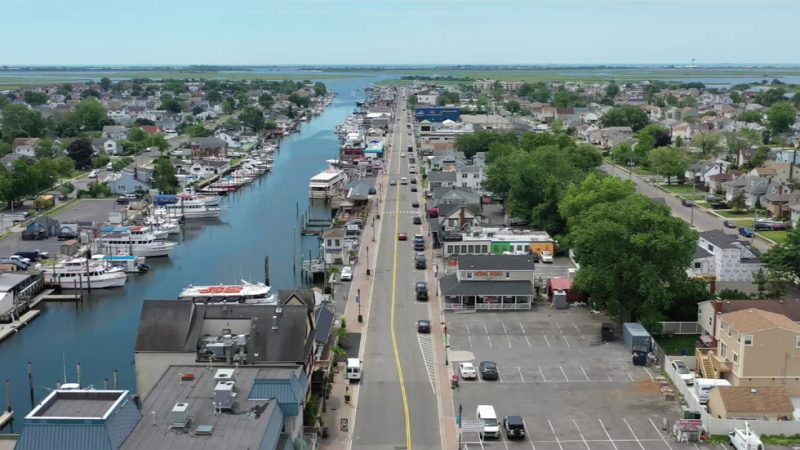Unraveling the Layers: Understanding Rome’s Crime Rates

Rome, the eternal city, is renowned for its rich history, breathtaking architecture, and vibrant culture. However, like any major metropolis, it grapples with the complex issue of crime. In this exploration, we delve into the multifaceted aspects of Rome’s crime rates, aiming to understand the dynamics, contributing factors, and the city’s ongoing efforts to maintain safety and security.
Historical Context:
To comprehend Rome’s contemporary crime rates, it’s essential to examine the historical context. The city’s evolution from ancient times to the present has witnessed various socio-economic and political shifts. Rome’s past struggles, such as periods of invasion and political instability, have left lasting imprints on the urban landscape and may have implications for its current crime scenario.
Current Crime Landscape:
As of recent statistics, Rome experiences a mix of property crimes, such as theft and burglary, and certain violent crimes, though the latter tends to be relatively lower compared to other major cities. Understanding the specific types of crimes prevalent in Rome provides a nuanced perspective on the challenges faced by law enforcement and policymakers.
Tourist Hotspots and Crime:
Being a global tourist destination, certain areas of Rome attract a higher concentration of visitors. Unfortunately, this also makes them more susceptible to pickpocketing and petty crimes. Iconic sites like the Colosseum, the Vatican, and the Trevi Fountain are often hotspots for criminal activity. Travelers are advised to exercise caution, particularly in crowded places, to minimize the risk of falling victim to opportunistic crimes.
Local Initiatives and Policing:
To combat crime effectively, Rome has implemented various initiatives to enhance policing and security. Community policing strategies aim to foster collaboration between law enforcement and local residents, creating a sense of shared responsibility for public safety. Additionally, the deployment of technology, such as surveillance cameras and data analytics, plays a crucial role in monitoring and preventing criminal activities.
Economic Factors:
Unemployment and economic inequality are often correlated with crime rates, and Rome is no exception. The economic downturns, exacerbated by global events, have impacted the job market and may contribute to certain types of crimes. Examining the socio-economic factors at play helps identify areas that require targeted interventions to address the root causes of criminal behavior.
Immigration and Crime:
Like many European cities, Rome has experienced waves of immigration, bringing diverse cultures and communities together. While research suggests that immigrants are not necessarily more prone to criminal activity, the socio-economic challenges associated with integration can contribute to localized crime rates. Successful integration programs and community outreach are essential to fostering harmony among diverse populations.
Cultural Influences:
Italy’s unique cultural dynamics can also influence crime rates. The importance placed on family ties, community relationships, and traditional values can contribute positively to social cohesion. However, the same cultural factors may also pose challenges, such as reluctance to report crimes within close-knit communities. Striking a balance between preserving cultural values and addressing criminal activities is crucial for effective law enforcement.
Tourism and Crime Prevention:
Given the significant role tourism plays in Rome’s economy, there’s a heightened focus on crime prevention strategies that specifically target tourists. Increased police presence, public awareness campaigns, and collaborations with hospitality businesses contribute to creating a safer environment for visitors. By addressing the vulnerabilities associated with tourism, Rome aims to protect its reputation as a welcoming and secure destination.
International Collaboration:
As crime becomes increasingly transnational, collaboration between law enforcement agencies on an international scale becomes imperative. Rome, being a global city, actively engages in partnerships with other cities, sharing best practices, intelligence, and resources. Such collaboration not only aids in addressing immediate crime concerns but also contributes to a broader understanding of global criminal networks.
Conclusion:
Rome’s crime rates are a complex tapestry woven from historical legacies, economic fluctuations, cultural influences, and the challenges posed by its status as a major tourist destination. Understanding and addressing these factors require a comprehensive and multifaceted approach. While the city continues to face challenges, the ongoing efforts in community policing, technological advancements, and international collaboration demonstrate a commitment to creating a safer and more secure environment for both residents and visitors. As Rome navigates the intricate intersection of tradition and modernity, the eternal city strives to uphold its reputation while actively working towards a safer future.
- What are the current crime rates in Rome? Crime rates in Rome vary by type. Generally, property crimes like theft are more common than violent crimes. It’s advisable to check recent statistics for specific figures and trends.
- Which areas in Rome are more prone to criminal activities? Tourist-heavy areas, such as the Colosseum and Vatican, are often targeted for pickpocketing. However, crime rates can vary, and it’s essential to stay vigilant in crowded places.
- How does Rome address safety concerns for tourists? Rome has implemented various measures, including increased police presence, public awareness campaigns, and collaborations with hospitality businesses, to create a safer environment for tourists.
- Are immigrants in Rome linked to higher crime rates? Research suggests that immigrants are not necessarily more prone to criminal activities. However, challenges related to integration and socio-economic factors may contribute to localized crime rates.
- What initiatives has Rome taken to combat crime? Rome employs community policing strategies, technology like surveillance cameras, and international collaborations to enhance security. The city continually explores innovative approaches to address criminal challenges.
- How does the economic situation in Rome impact crime rates? Unemployment and economic inequality can influence crime rates. Economic downturns may contribute to certain types of crimes, making it important to address the root causes through targeted interventions.
- What role does cultural influence play in Rome’s crime landscape? Italy’s unique cultural dynamics, emphasizing family and community, can positively impact social cohesion. However, cultural factors may also pose challenges, such as underreporting within close-knit communities.
- Is Rome collaborating with other cities to address crime on an international level? Yes, Rome actively engages in international collaborations with other cities, sharing best practices, intelligence, and resources to address the transnational nature of crime.
- How does Rome balance cultural preservation with crime prevention efforts? Striking a balance between preserving cultural values and addressing criminal activities is crucial. Rome aims to uphold its cultural heritage while implementing effective crime prevention strategies.
- What should tourists do to stay safe in Rome? Tourists should remain vigilant in crowded areas, secure their belongings, and stay informed about the local safety guidelines. Additionally, following the advice provided by local authorities and accommodations can enhance personal safety.
- How can residents contribute to improving safety in their communities? Residents can actively participate in community policing initiatives, report suspicious activities, and collaborate with law enforcement. Building strong community ties can enhance overall safety and security.
- What steps is Rome taking to address the impact of global events on crime rates? Rome continually adapts its strategies to address the impact of global events on the economy and social dynamics. Flexibility in law enforcement and targeted interventions help mitigate the effects of external factors.
Understanding Rome’s crime rates involves considering various factors, and these FAQs aim to provide insights into the complexities of the city’s safety landscape. It’s crucial for both residents and visitors to stay informed, be aware of their surroundings, and actively contribute to the overall well-being of the community.






